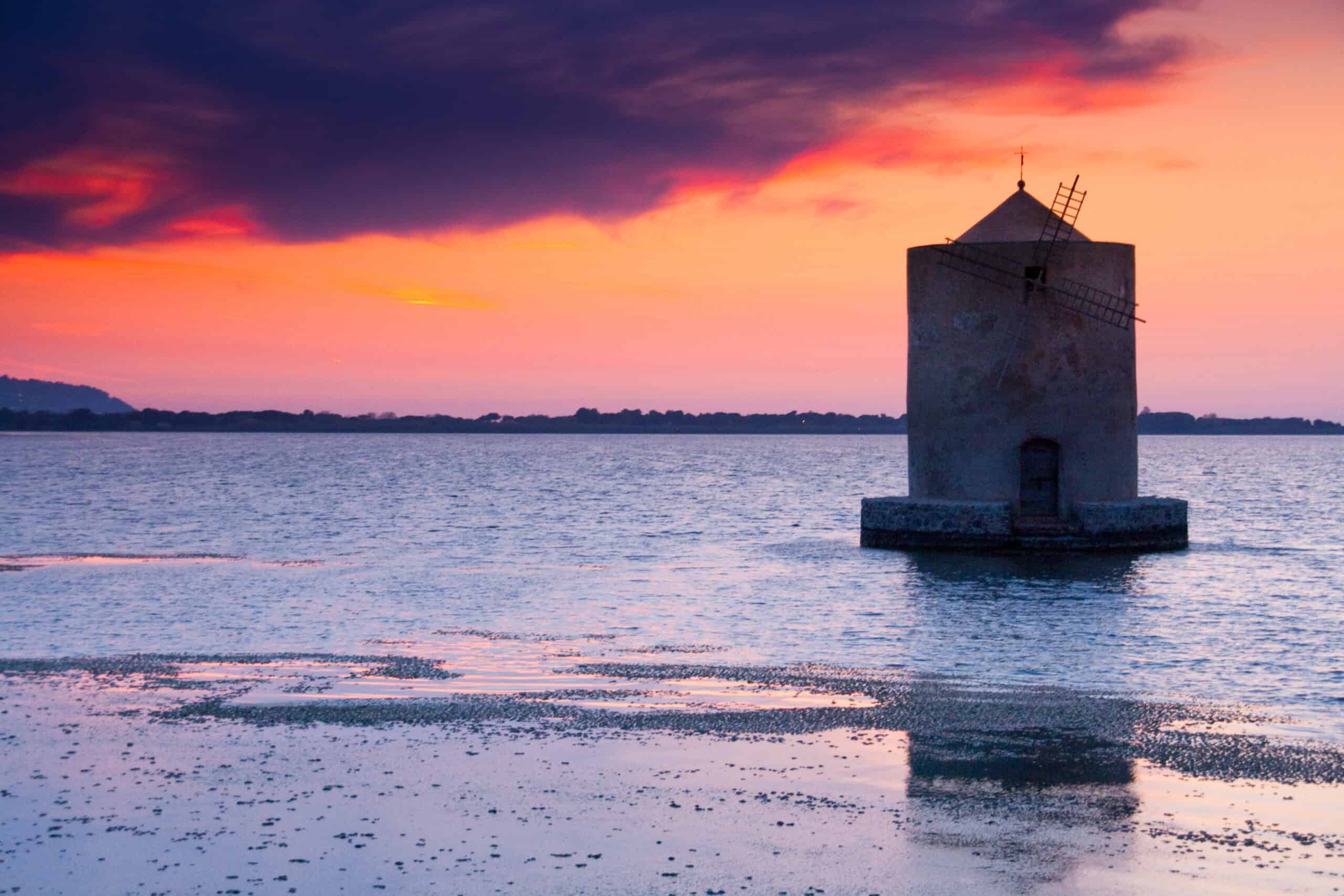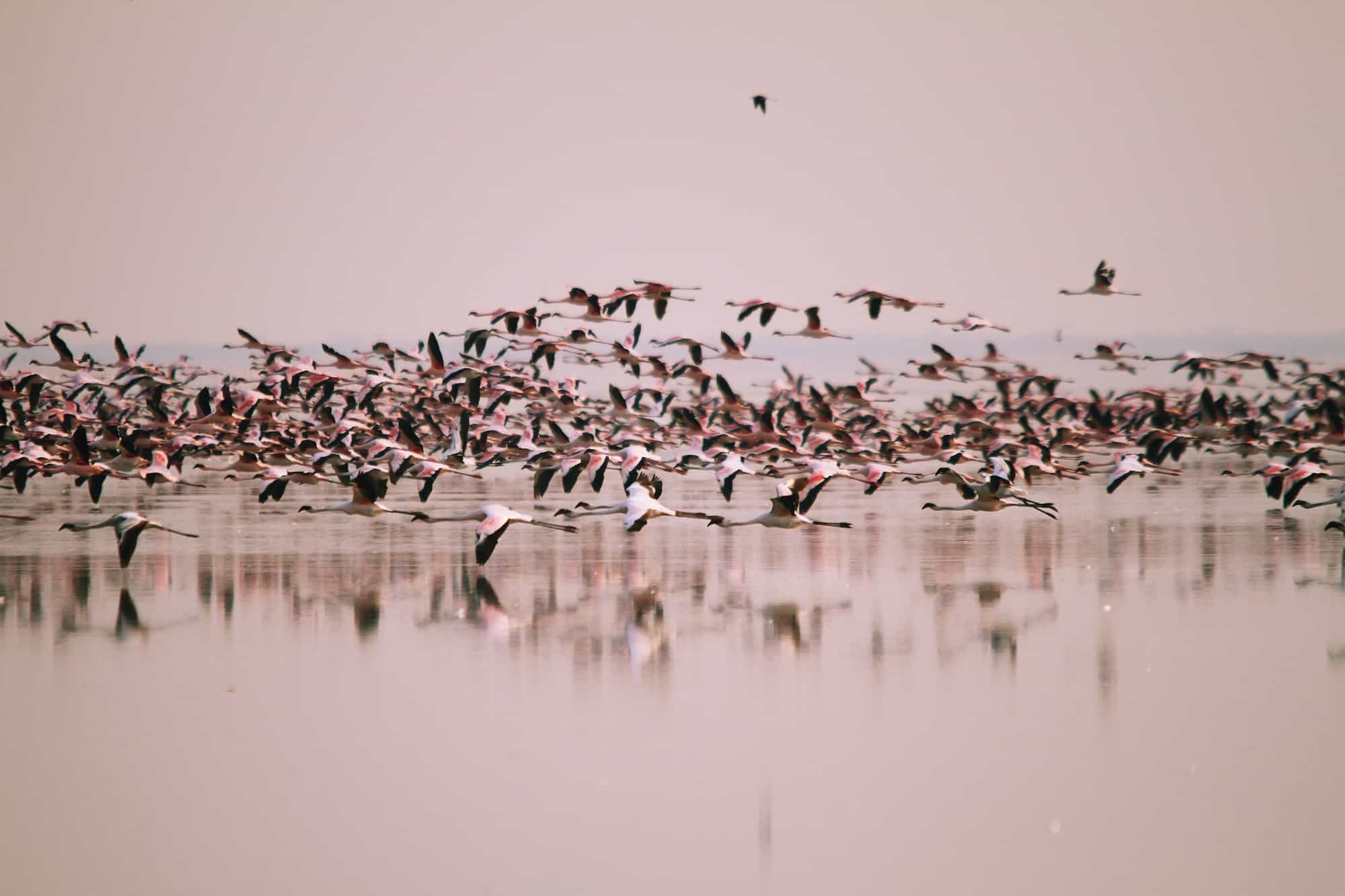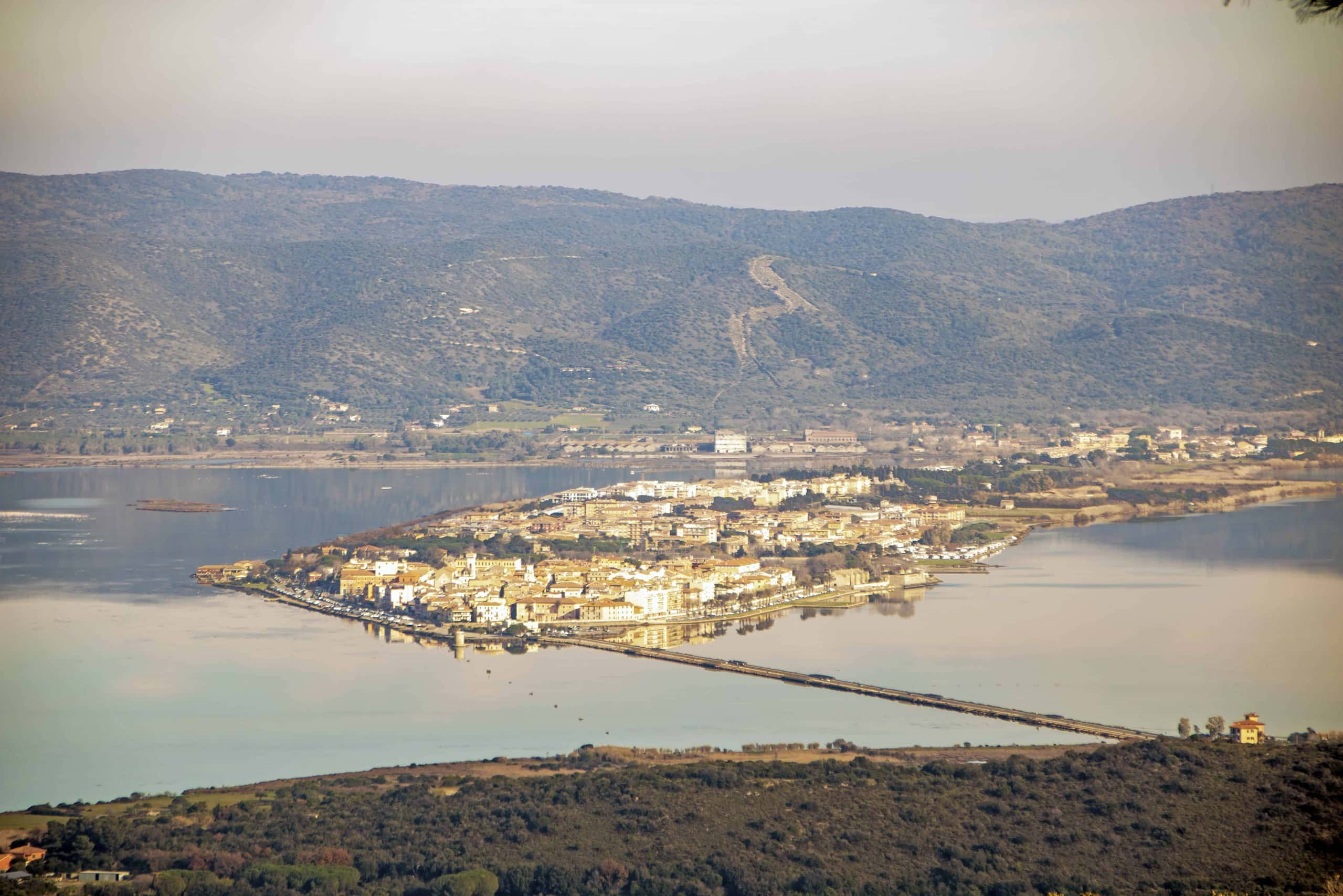The unreal and suggestive atmosphere of Orbetello is the result of its position on the thin strip of land in the center of the homonymous lagoon, which a dam divides in two, connecting the city to the Monte Argentario promontory.
Located in the heart of the Costa d’Argento, Orbetello is located about 40 kilometers from the provincial capital of Grosseto and stands at the end of a peninsula in the Tuscan Maremma, at the center of the large lagoon delimited by the two tomboli: the Feniglia Tombolo and the Giannella Tombolo.
What to see in Orbetello
THE HISTORIC CENTER OF ORBETELLO
The old town, whose shape resembles the bow of a ship, is connected to Monte Argentario by an artificial bridge, the Leopoldiana Dam – about 1.5 kilometers long – built in 1841 and inaugurated the following year by Grand Duke Leopoldo II, which divides the large lagoon into two lagoon basins: the lagoon of Levante and the lagoon of Ponente. From the final stretch of the dam, you can appreciate a suggestive view of the historic center and the 16th-century Spanish windmill, the symbol of Orbetello, built in the middle of the water. The oldest part of the town, historically impregnable, is surrounded by imposing Etruscan walls from the 5th century BC, replaced in several places by the fortifications in the Spanish era, when Orbetello was the capital of the State of the Presidi, created in 1557. Among these, well-preserved gates and poles stand out, including Porta Medina Coeli (or Porta Nuova), Porta a Terra and Porta del Soccorso. The pearl of the entire defensive system is the former Guzman Powder Magazine (now the home of the Orbetello Archaeological Museum), built by Charles II in 1692. Here Garibaldi stocked up on weapons and ammunition before embarking on Talamone, during his passage during the Expedition of the Thousand, in which eleven Orbetello people also participated.
ORBETELLO IS A NAME THAT DERIVES FROM THE LATIN “URBIS TELLUS”, LAND OF THE CITY, THAT IS, OF ROME, WHICH SUCCEEDED THE ETRUSCANS IN THE AREA.
From the walls of the west, you arrive at Piazza della Repubblica, where you can admire the Cathedral of Santa Maria Assunta, built in 1376 and rebuilt in the 17th century, with a Gothic Tuscan-style facade. Inside, to see the chapel of San Biagio which, among volutes and Baroque marbles, preserves the relic of the head of the saint and a marble slab from the early Middle Ages; the stuccoes of the chapel of the Most Holy Sacrament, the wooden confessional of San Paolo della Croce and the statue of the Virgin are also of great value. Leaving behind the decorated portal of the cathedral, we head to the former Clarisse Convent (1599), now the seat of the municipal library and the Pro Loco Lagunare di Orbetello. The 17th-century building has hosted for years the famous Frontone del Tempio di Talamone (currently on an itinerant exhibition in Chile, it will be placed in the Municipal Archaeological Museum on its return), an Etruscan work of Hellenistic age: an accurate work of recomposition of the different fragments and a recent restoration have returned to us the heroic image of Oedipus. In the nearby Piazza Garibaldi, you can admire the image of another hero, that of the Two Worlds, in the work by Ettore Ferrari (1887), and the Spanish Palace, surmounted by the 17th-century Clock Tower. A little further on, the characteristic Renaissance facade of the 18th-century Church of San Giuseppe stands out. In Orbetello, two other squares boast the splendors of 17th-century Spain: Piazza del Plebiscito, with the monument to the Orbetellani Fallen (1922) and the Town Hall, adorned with coats of arms of viceroys and an epigraph in Latin from the nearby city of Cosa, and Piazza Beccaria, with the Church of San Francesco da Paola, founded in the 16th century.
Laguna di Orbetello – WWF Oasis
The Laguna di Orbetello is a shallow, 26.22-square-kilometer lagoon located in Tuscany, Italy. It is bordered by the two sandy cordons of the Tombolo della Giannella and the Tombolo di Feniglia. The lagoon communicates with the Albegna River through the Fibbia and Saline canals, and with the sea through the Nassa and Ansedonia or Gorghili canals. The lagoon is comparable to a lung that continuously receives water from the sea, mainly through the sand of the two tomboli, by infiltration. It is a living body of water, improperly called a lagoon, more of a coastal lake of salt water, a natural ecosystem, fascinating, unique, and unique in its kind in Italy. A fish nursery, the kingdom of eels, which is wisely marinated is the gastronomic pride of Orbetello, an oasis for migratory and resident birds that find a protected habitat and a rich supply of food here. Geese, coots, moorhens, and teals nest peacefully in the reeds that line the shores. The lagoon is a treasure of beauty, but also a natural wealth to be preserved and saved. The complexity of the exchange of marine waters, which guarantees the lagoon the character of an active lung and prevents it from becoming a stagnant pond of stagnant and putrefying waters, makes the biological balance of the area delicate, which can only survive thanks to careful environmental surveillance. Various areas of the Laguna di Orbetello are protected areas, managed in the WWF Oasis, some of which are designated as nature reserves.




